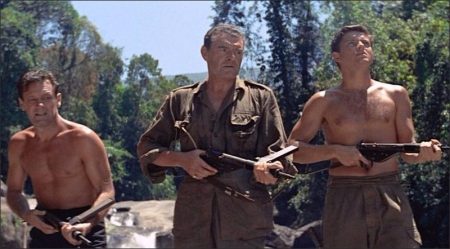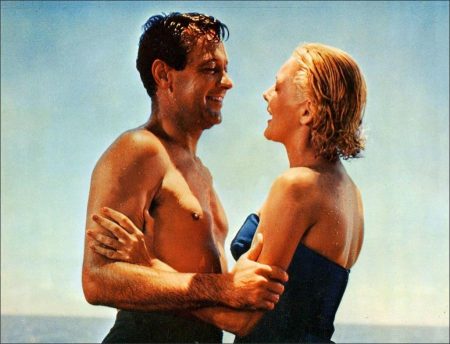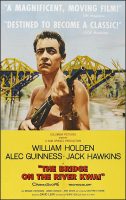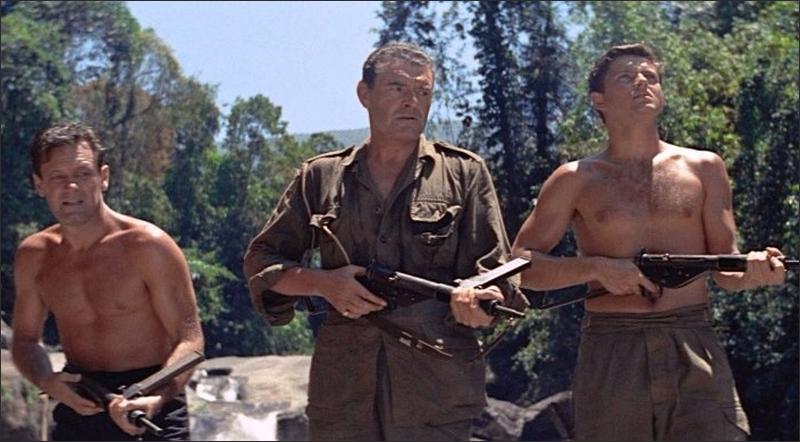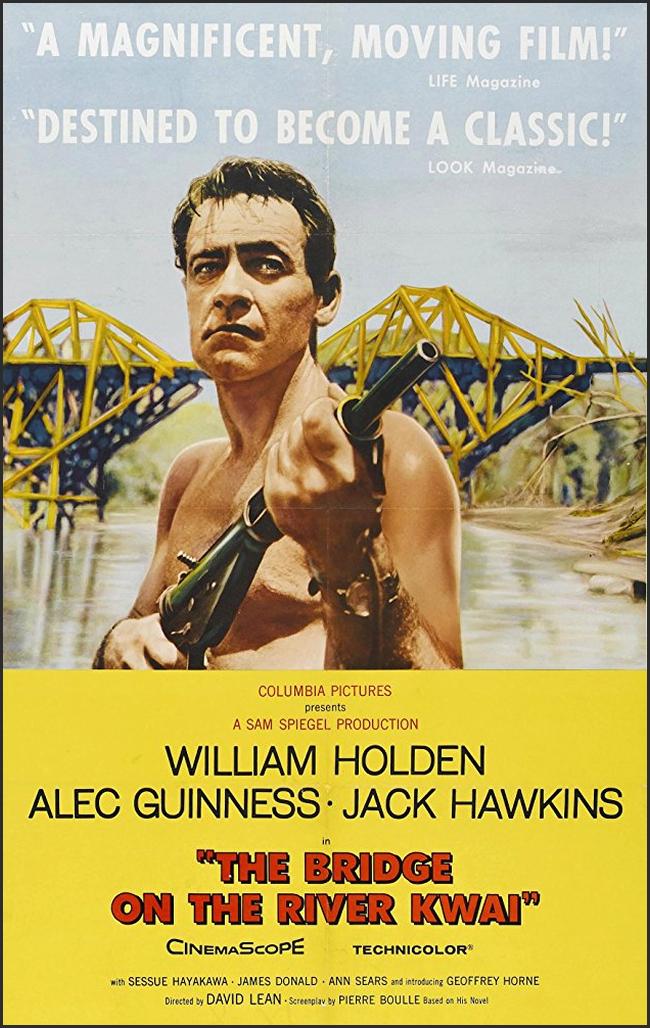The Bridge on the River Kwai deals with the situation of British prisoners of war during World War II who are ordered to build a bridge to accommodate the Burma-Siam railway. Their instinct is to sabotage the bridge but, under the leadership of Colonel Nicholson, they are persuaded that the bridge should be constructed as a symbol of British morale, spirit and dignity in adverse circumstances.
At first, the prisoners admire Nicholson when he bravely endures torture rather than compromise his principles for the benefit of the Japanese commandant Saito. He is an honorable but arrogant man, who is slowly revealed to be a deluded obsessive. He convinces himself that the bridge is a monument to British character, but actually is a monument to himself, and his insistence on its construction becomes a subtle form of collaboration with the enemy. Unknown to him, the Allies have sent a mission into the jungle, led by Warden and an American, Shears, to blow up the bridge.
The Bridge on the River Kwai (1957), the memorable, epic World War II adventure/action, anti-war drama, was the first of director David Lean’s major multi-million dollar, wide-screen super-spectaculars (his later epics included Lawrence of Arabia (1962) and Doctor Zhivago (1965)).
The screenplay was based upon French author Pierre Boulle’s 1954 novel of the same name. [Boulle was better known for his screenplay for Planet of the Apes (1963).] Although he received sole screenplay credit, other deliberately uncredited, blacklisted co-scripting authors (exiled Carl Foreman – who scripted High Noon (1952) – and Michael Wilson) had collaborated with him, but were denied elibigility. They were post-humously credited years later, in late 1984, in a special Academy ceremony.
[The film’s story was loosely based on a true World War II incident, and the real-life character of Lieutenant Colonel Philip Toosey. One of a number of Allied POW’s, Toosey was in charge of his men from late 1942 through May 1943 when they were ordered to build two Kwai River bridges in Burma (one of steel, one of wood), to help move Japanese supplies and troops from Bangkok to Rangoon. In reality, the actual bridge took 8 months to build (rather than two months), and they were actually used for two years, and were only destroyed two years after their construction – in late June 1945. The memoirs of the ‘real’ Colonel Nicholson were compiled into a 1991 book by Peter Davies entitled The Man Behind the Bridge.]
The Bridge on the River Kwai (1957)
Directed by: David Lean
Starring: William Holden, Alec Guinness, Jack Hawkins, Sessue Hayakawa, James Donald, Geoffrey Horne, André Morell, Peter Williams, Harold Goodwin, Percy Herbert, Ann Sears
Screenplay by: Carl Foreman
Cinematography by: Jack Hildyard
Film Editing by: Peter Taylor
Art Direction by: Donald M. Ashton
Music by: Malcolm Arnold
Distributed by: Columbia Pictures
Release Date: October 2, 1957 (United Kingdom), December 14, 1957 (United States)
Views: 297
